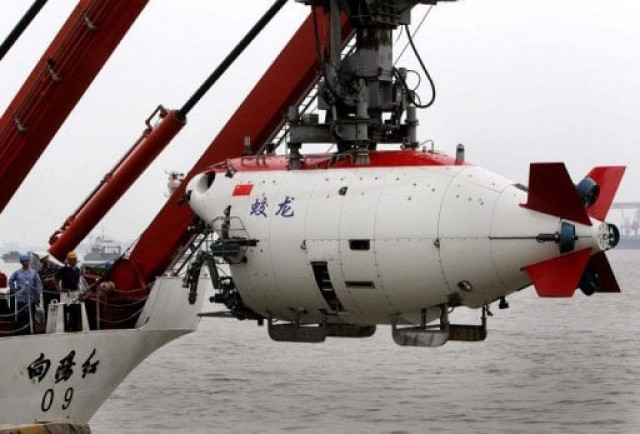China submersible to plumb new ocean depths
The "Jiaolong" craft is set to dive 7,000 metres into the Mariana Trench in the Pacific Ocean.

China submersible to plumb new ocean depths
The "Jiaolong" craft has arrived at a designated area in the Pacific Ocean aboard a Chinese ship and is set to dive 7,000 metres (22,960 feet) into the Mariana Trench, the official Xinhua news agency said.
The vessel -- named after a dragon from Chinese mythology -- reached 5,188 metres in a Pacific Ocean dive last July, Xinhua said, theoretically putting most of the ocean floor's vast resources within China's reach.
Earlier this year, American film director James Cameron descended about seven miles (11 kilometres) to the bottom of the Mariana Trench in the western Pacific -- the deepest place in the world.
His effort is believed to have at least equalled the record for the deepest manned dive, set by a US Navy officer and a Swiss oceanographer in 1960, according to Guinness World Records.
In the first of its six dives, the Jiaolong -- which can take up to three crew -- will venture down more than 5,000 metres, then progressively increase the depth in later missions, each of them eight to 12 hours long, Xinhua said.
Calls to the State Oceanic Administration went unanswered.
The deep-sea dive push comes as China plans to launch a spacecraft to conduct its first manned space docking later this month, part of its efforts to establish a permanent space station by 2020.
A Chinese expert told AFP that the Jiaolong could be used for scientific research, to collect samples of undersea life and study geological structures.
"It's not a simply constructed submersible," said Jian Zhimin, director of the State Key Laboratory of Marine Geology at Shanghai's Tongji University.
"If it is successful in the 7,000-metre challenge, then it can be turned over to scientists for use," he said.
Since the Jiaolong's maximum design depth is 7,000 metres a dive to that level will test the limits of China's technology, he added.
Energy-hungry China has previously said its submersible programme is aimed at scientific research, peaceful exploration and natural resources.
Scientists say the oceans' floors contain rich deposits of potentially valuable minerals, but the extreme depths pose technical difficulties in harvesting them on a wide scale.



















COMMENTS
Comments are moderated and generally will be posted if they are on-topic and not abusive.
For more information, please see our Comments FAQ